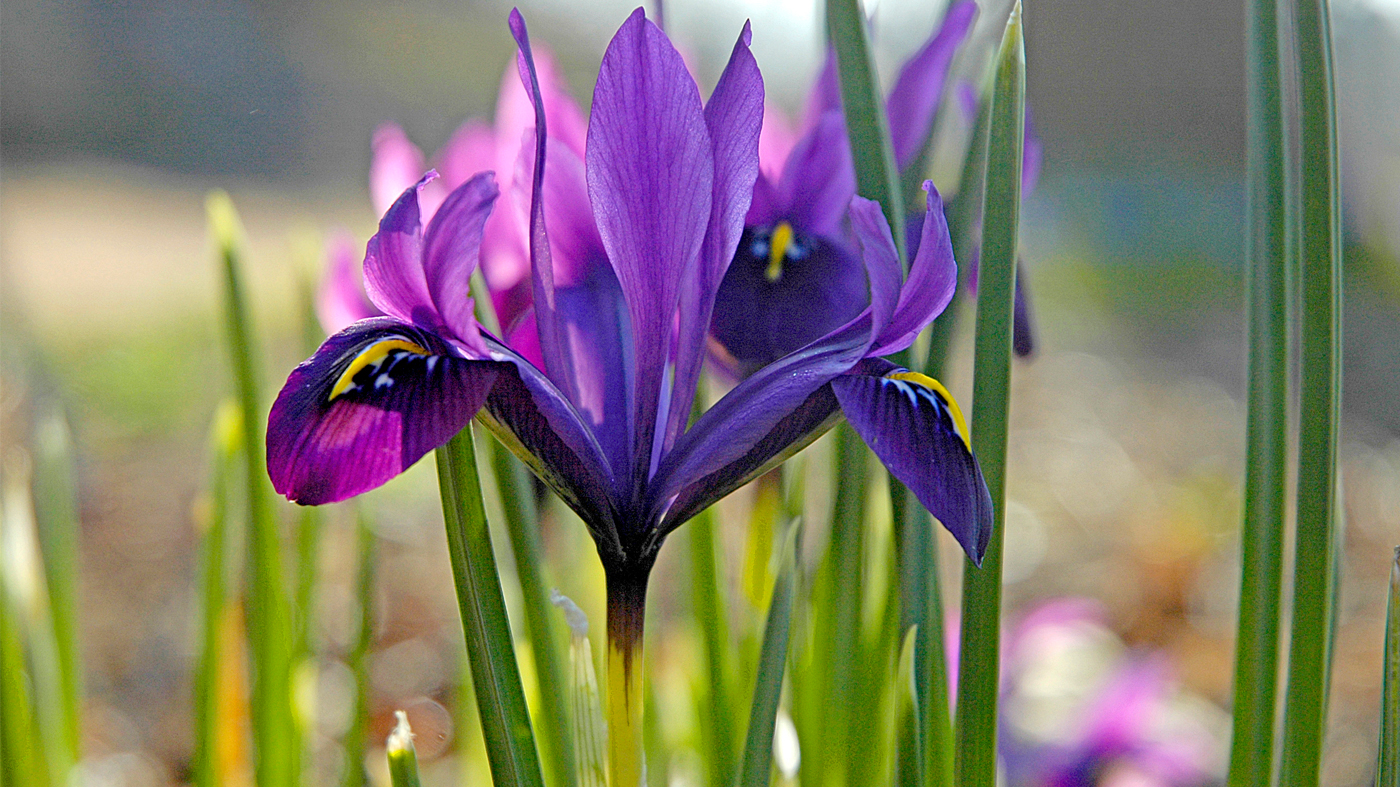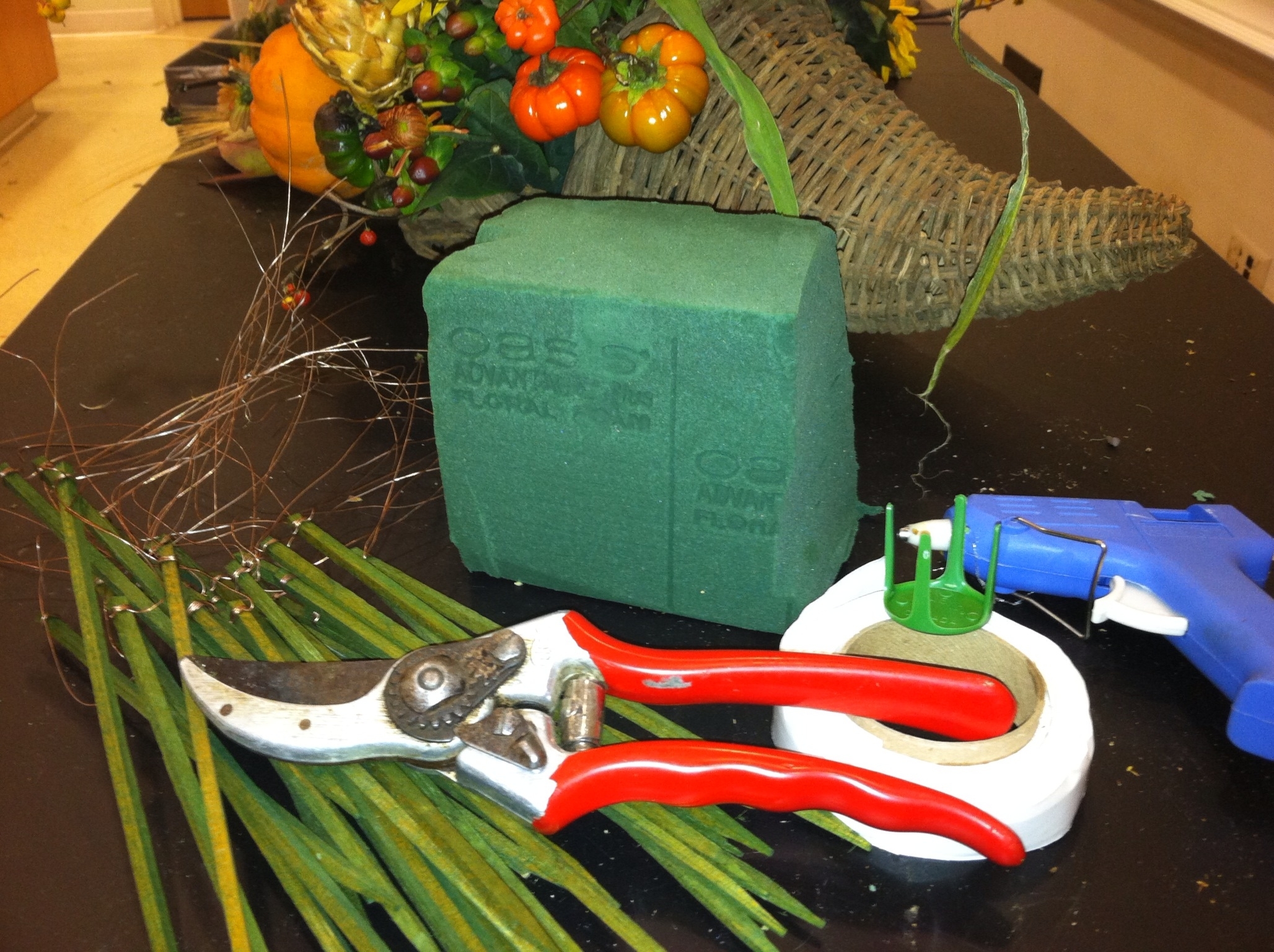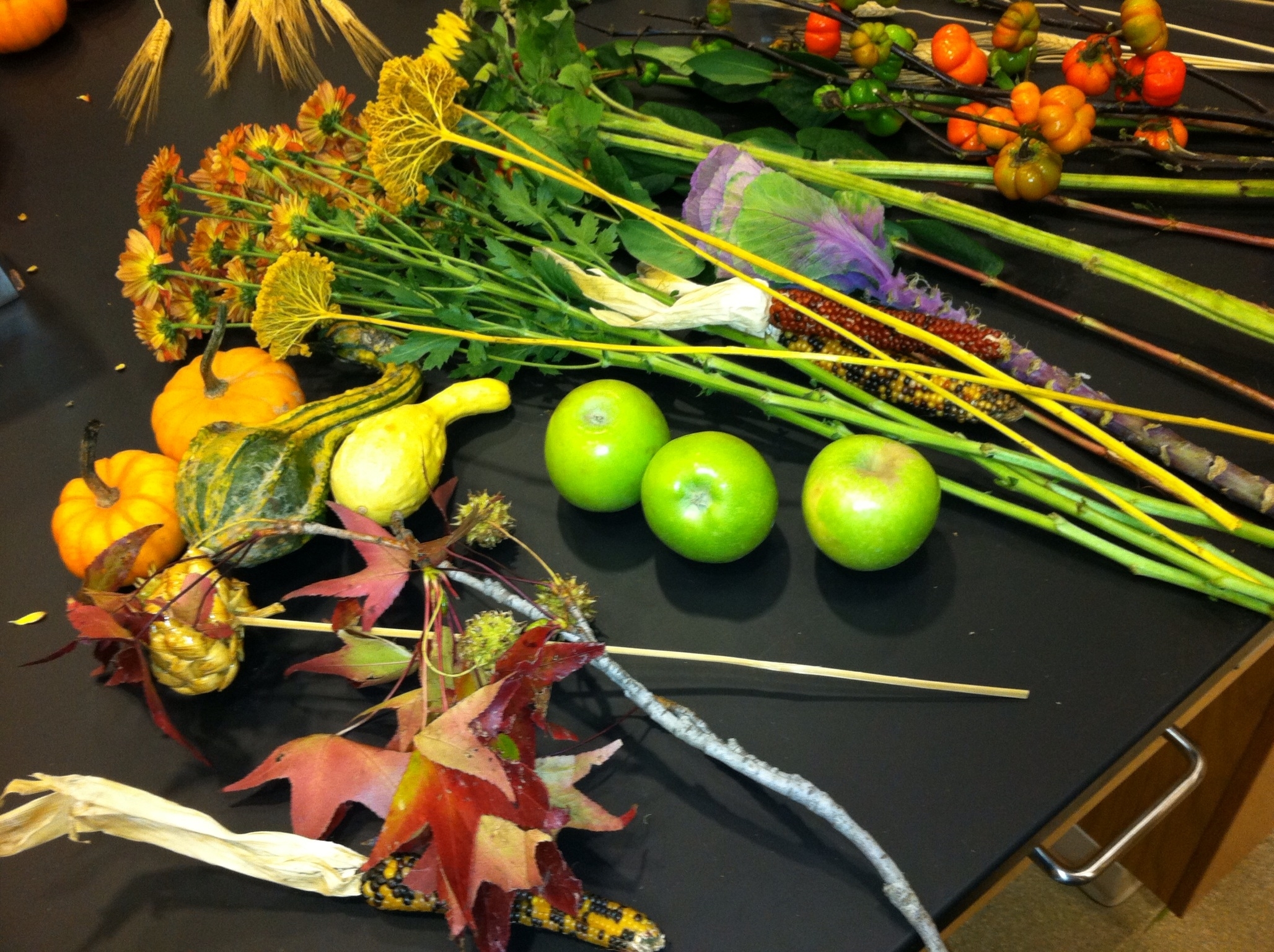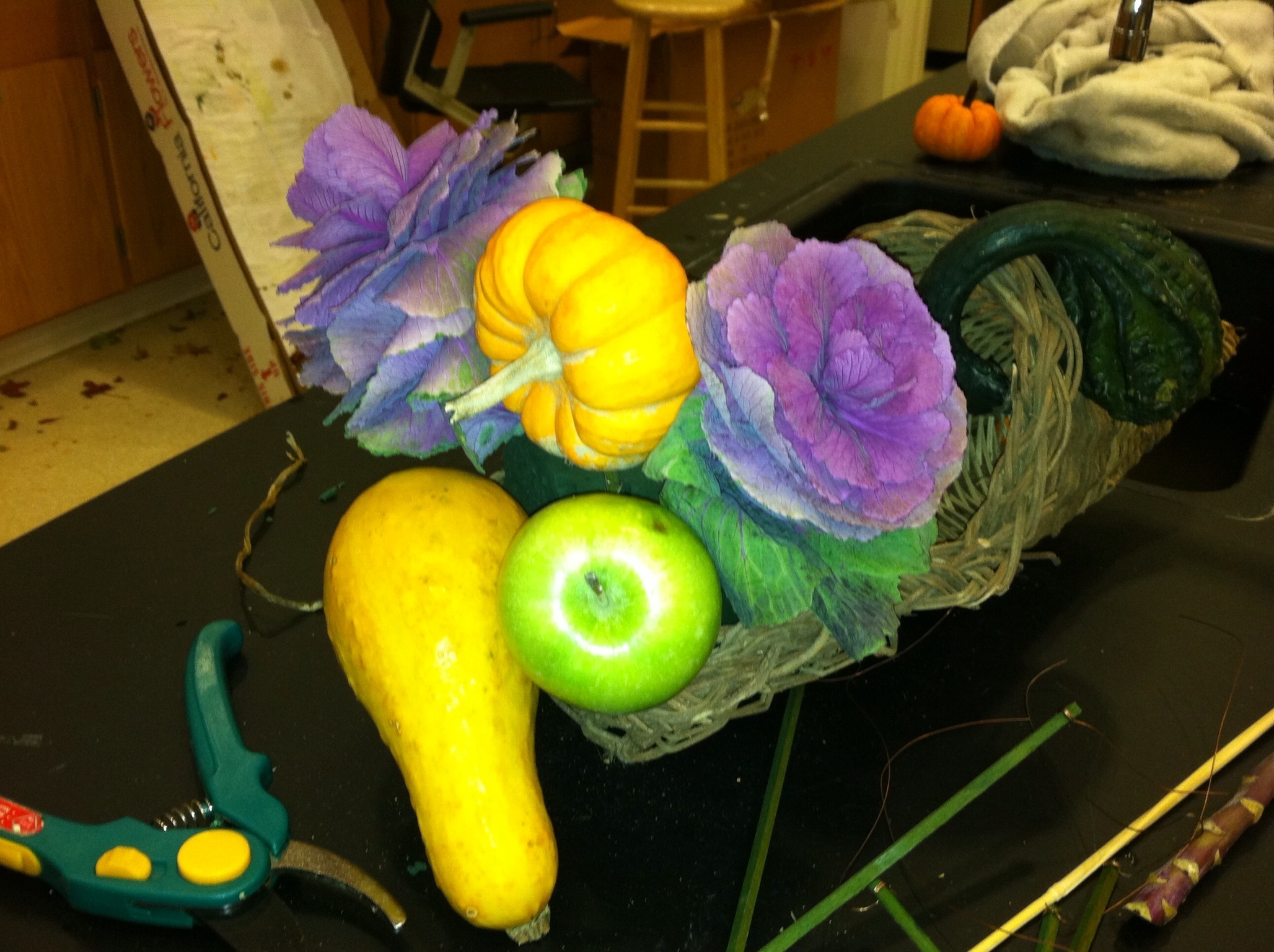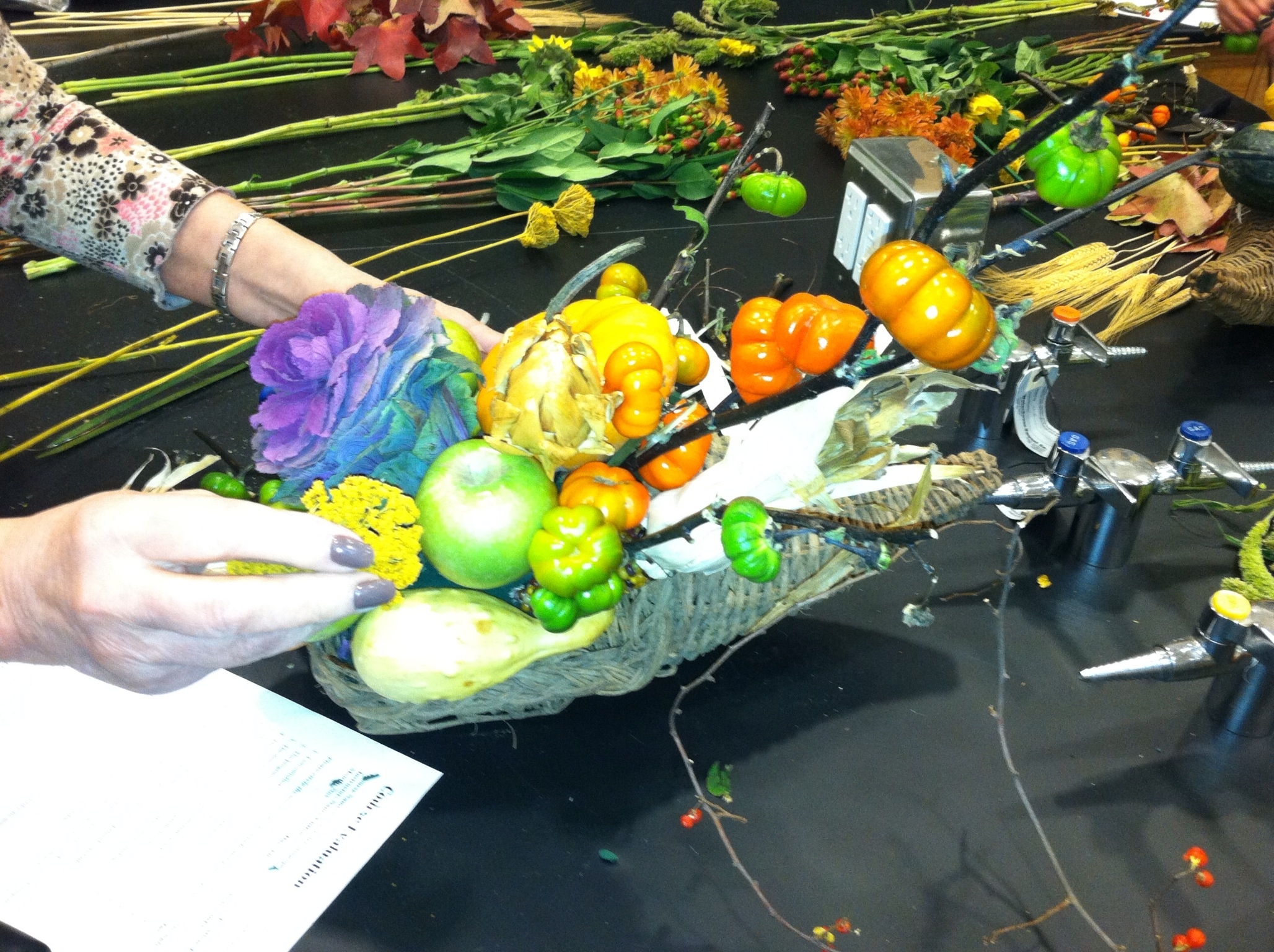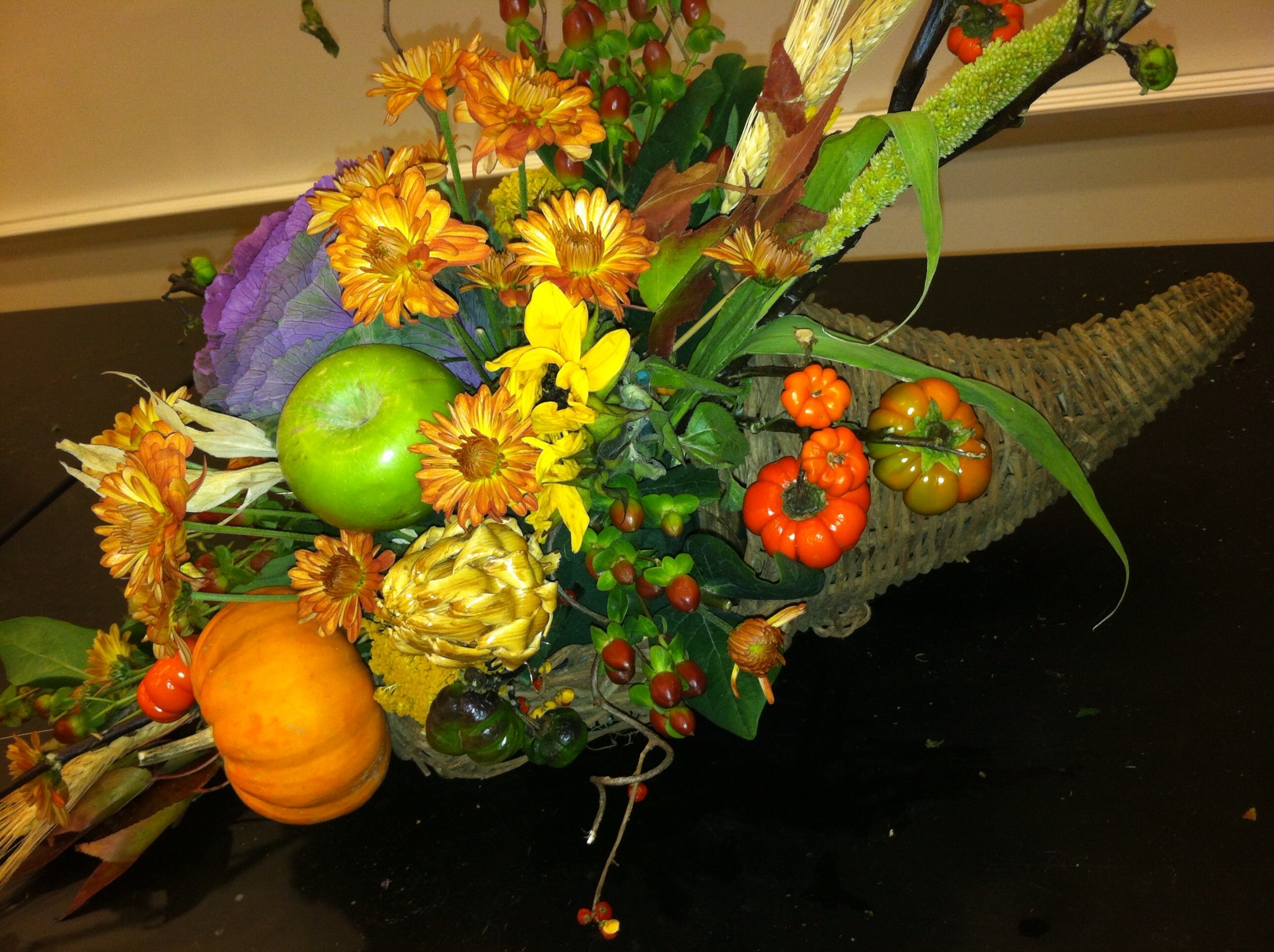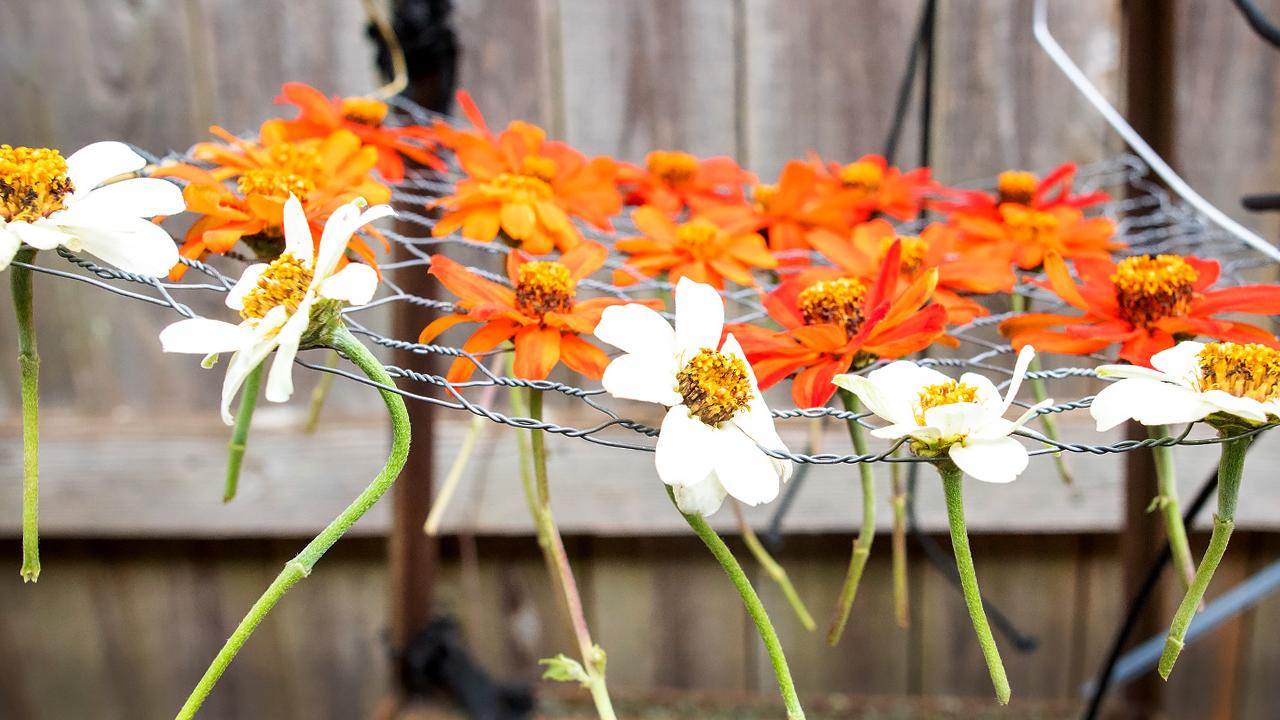

How-to
Garden Stories
Cornucopia 101
It’s a big week for cooking, for getting out the china, crystal, and silver, and for setting a holiday-worthy table…but have you thought about a centerpiece yet?
A cornucopia, or horn of plenty, is a classically beautiful, easy, and crowd-pleasing way to pull together a centerpiece without a lot of fuss or expense. I taught a fall cornucopia class at the Garden, and I had the pleasure of appearing on WGN-TV with tips for making an edible fruit-and-vegetable cornucopia. This week, I thought I’d share a few tips that both cornucopias have in common.
Whether you’re using flowers or fruit or vegetables, the process of assembling a cornucopia is basically the same. Once your supplies are gathered, it should take less than an hour to put together.

